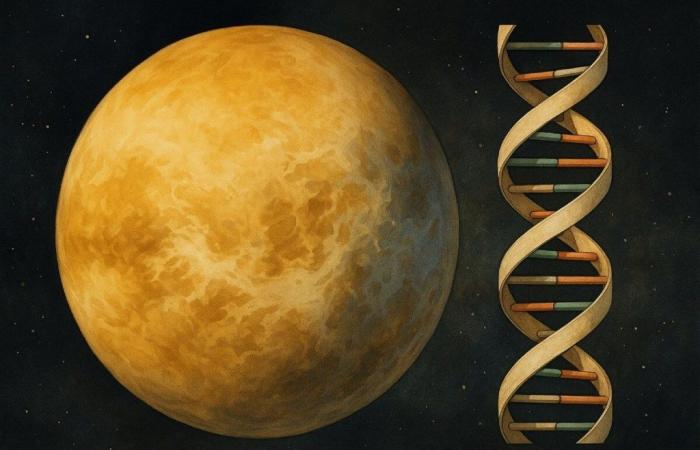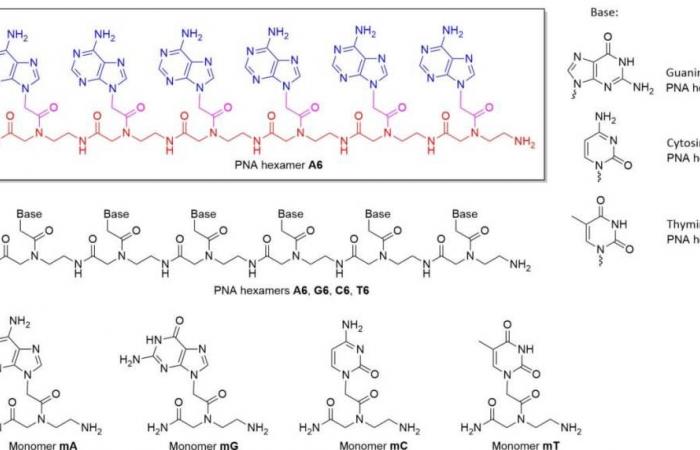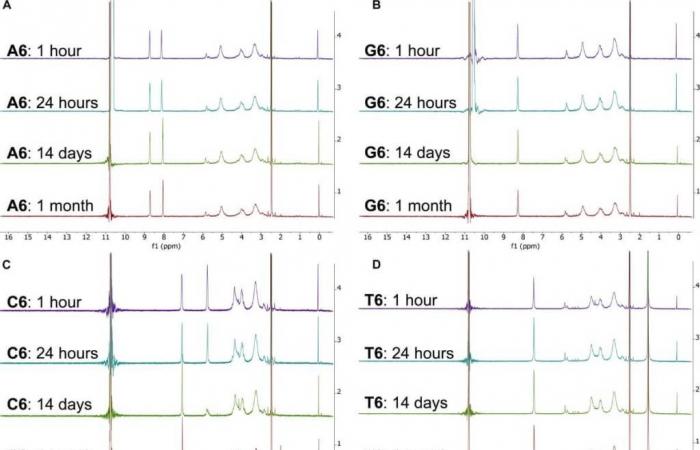Created: 9.05.2025 | 09:08 Updated: 9.05.2025 | 09:08
Is it possible that something similar to DNA survives in an environment that seems designed to destroy any way of life? If someone had raised this possibility only a few years ago, it would probably have been received with skepticism. However, a team of scientists has found evidence that certain alternative genetic polymers, such as the peptide nucleic acid (PNA)they can resist conditions that until now we thought lethal. Among them, nothing less than concentrated sulfuric acid present in the clouds of Venus.
The study, published in the magazine Science Advancesnot only challenges our ideas about planetary habitabilitybut opens new possibilities in astrobiology. Researchers have shown that the PNA, a structural cousin of DNA, shows surprising stability in 98 % sulfuric acid at room temperature, for at least two weeks. This discovery could rewrite what we understand about life in extreme environments.
PNA: A resistant genetic candidate
Peptide nucleic acid (PNA) is not new in sciencealthough his possible role in extraterrestrial environments has recently earned attention. It is a synthetic molecule similar to DNA, but with a peptide -based skeleton structure instead of sugars and phosphates. This particularity gives it a chemical stability much higher than that of traditional DNA.
According to the authors of the study, “PNA has been proposed as a candidate for the first genetic polymer in the primitive land”The PNA’s ability to resist chemical attacks in hostile media such as sulfuric acid makes it an ideal model to investigate the possibility of life in places as extreme as the clouds of Venus.
In the experiments performedsamples of PNA were subjected to concentrated sulfuric acid solutions at room temperature. After fourteen days, the molecules only showed between 0.4 % and 28.6 % degradation, depending on their specific sequence. This resistance suggests that PNA -based life forms, or similar polymers, could be viable in acid environments.
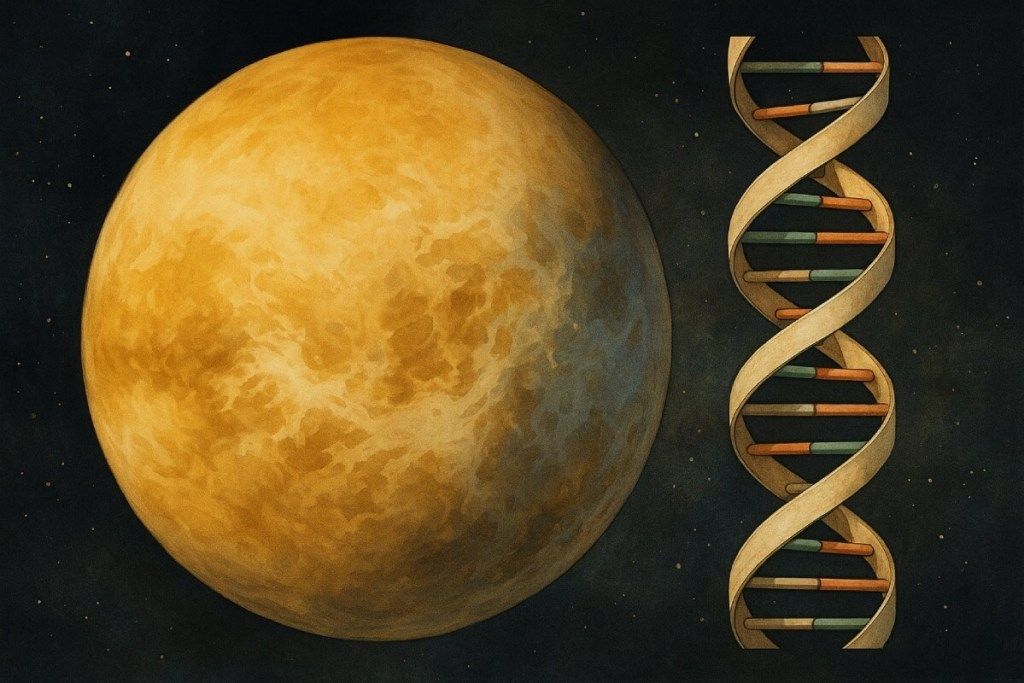
What is the PNA?
Peptide nucleic acid, known as PNA, is a synthetic polymer that mimics the function of DNA and RNAalthough it presents a very different structure. Instead of having a skeleton formed by sugars and phosphates, as in natural nucleic acids, The PNA uses a chain of N- units (2-aminotil) -glycina linked by peptide bonds. To this chain the nitrogenous bases responsible for the specific recognition of DNA or RNA sequences are connected, respecting the classic rules of base complementarity. This structure, lacking electric charges, allows a stronger union with its complementary sequences and gives great resistance to enzyme degradation.
Thanks to its high stability and strong affinity of union, the PNA has become A very useful tool in fields such as biomedicine and biotechnology. It is used in diagnostic techniques, in antisntidal therapies, and as an antiviral, anticancer and antibacterial agent. In addition, due to its robustness and its ability to form in extreme conditions, the hypothesis that could have been one of the first genetic materials in the history of life on earth has been raised, even before the RNA. Although it does not exist naturally in current organisms, its potential for scientific and medical applications remains expanding.
Venus: A little hospitable scenario
Venus has been considered for decades as the most inhospitable planet in the solar system. With superficial temperatures that exceed 450 ° C and an atmosphere loaded with carbon dioxide and sulfuric acid, life can flourish there. However, the conditions in the clouds of Venus, located between 48 and 60 kilometers of altitude, are radically different.
In this atmospheric striptemperatures are around 0 ° C and 100 ° C, a relatively “comfortable” range if compared to the surface. Of course, the chemical composition remains extraordinarily aggressive, dominated by concentrated sulfuric acid. Until recently, the possibility of life in those layers was discarded, precisely, because it was assumed that any organic molecule would be destroyed immediately.
In the words of the research team, “find that the PNA can remain in concentrated sulfuric acid for hours is amazing”This observation poses a scenario in which life based on alternative polymers could exist, adapting to radically different conditions from those we know on earth.

How was the experiment conducted?
The study combined mass spectrometry techniques (LC-MS) and nuclear magnetic resonance (NMR) to evaluate the integrity of PNA hexames after exposure to sulfuric acid. Sequences were analyzed exclusively by adenine, guanine, cytosine or thymine.
The results showed a minimum degradation After 14 days at room temperature. However, when temperatures increased to more than 80 ° C, the PNA began to break quickly due to the solvolysis of its amida bonds, a chemical process in which the molecules break down when reacting with the solvent.
In one of the study statements, it is pointed out that “PNA hexames show less than 28.6 % degradation in 98 % sulfuric acid in ambient temperature conditions for at least 14 days”. This finding is crucial, since the temperature ranges in the clouds of Venus overlap with the conditions of the experiment.
In addition, the researchers stressed that the type of nitrogen base affects the stability of the PNA, being the sequences based on guanina the most resistant to degradation.
Beyond the PNA: new challenges
Although these results are hopefulthe study itself recognizes important limitations. The PNA begins to degrade at temperatures above 50 ° C, which is a problem, since some areas of the clouds of Venus exceed that brand.
Dr. Petkowski commented that “Our future work will focus on creating a genetic polymer that is stable in sulfuric acid concentrated in the entire temperature range of Venus clouds”This implies designing even more resistant molecules, capable of supporting not only extreme acidity, but also thermal variations.
In additionThe team warns that, although chemical stability is a necessary condition for life, it is not enough by itself. It is necessary to demonstrate that these polymers could replicate, mutate and evolve, basic functions for any way of life.
Therefore, The finding is just a first step. The following challenge will be to identify or design molecules that can fulfill complete genetic functions in such a hostile environment.
A different life in Venus?
This type of research invites us to rethink the concept of life. Until now, our searches have been based on the parameters of terrestrial life: liquid water, moderate temperature, a protective atmosphere. However, the possibility that there are life forms based on other chemicals greatly expand our field of vision.
The definition of habitability is transformed. According to the researchers, “The existence of complex organic chemistry in a planetary environment is a prerequisite for habitability”That is, life could arise where complex chemistry is possible, even if the medium is toxic to us.
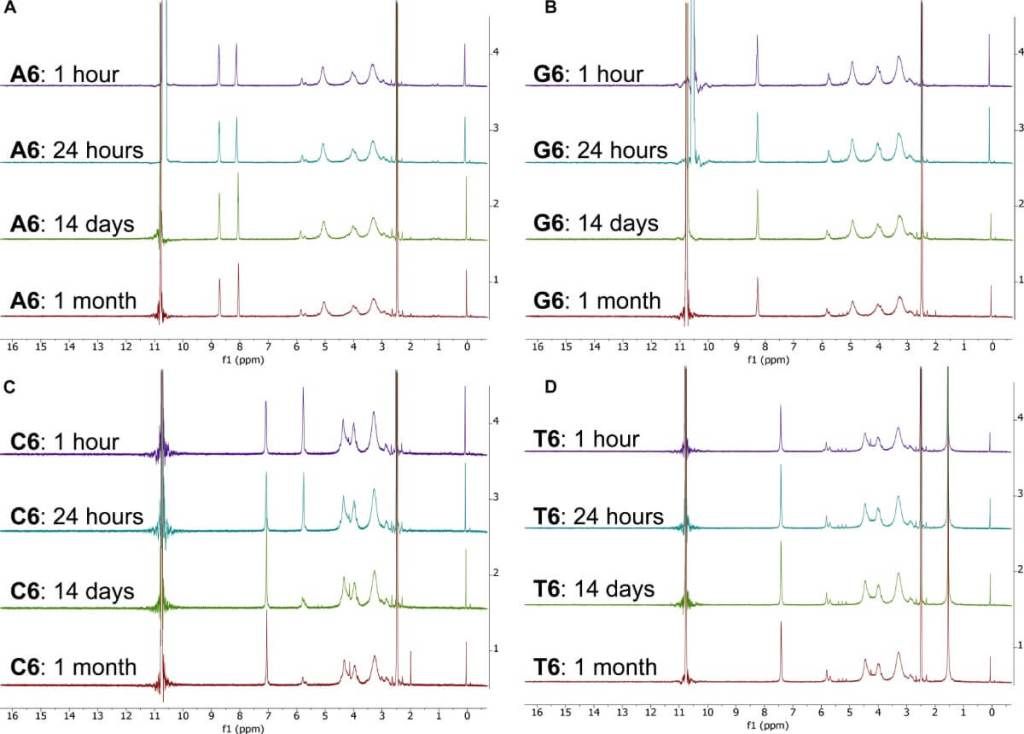
In this senseVenus ceases to be a sterile hell to become an intriguing candidate. If alternative genetic molecules can survive in their clouds, why not equally strange ways of life?
The study represents a paradigm shift. It teaches us that, before ruling out a world because of its apparent hostility, we must investigate what ways of life could adapt to it.
An expanding research field
Petkowski’s work and his colleagues are inserted into a growing trend Within astrobiology: explore life in extreme environments. From the Methane Oceans of Titan to the icy flawed speakers, scientists begin to imagine biosfeas based on solvents other than water.
In this specific casesulfuric acid, traditionally seen as a destroyer of life, is presented as a possible alternative solvent. As the authors stand out, “Concentrated sulfuric acid can support a diverse range of organic chemistry”.
In addition to its astrobiological importancethis type of research has practical implications in industrial chemistry and biotechnology. Understanding how certain molecules can resist extreme acids could inspire new more robust materials or industrial processes.
The truth is that we are barely scratching the surface of these possibilities. There is much to discover, but every step we take redefines what we understand for life.
References
- Janusz J. Petkowski, Sara Seager, Maxwell D. Seager, William Bains, Nittert Marinus, Mael Poizat, Chad Plumet, Jim van Wiltenburg, Ton Visser, Martin Poelert. Astrobiological implications of the stability and reactivity of peptide nucleic acid (PNA) in concentrated sulfuric acid. Science Advances2025. Two: 10.1126/sciadv.adr0006.




